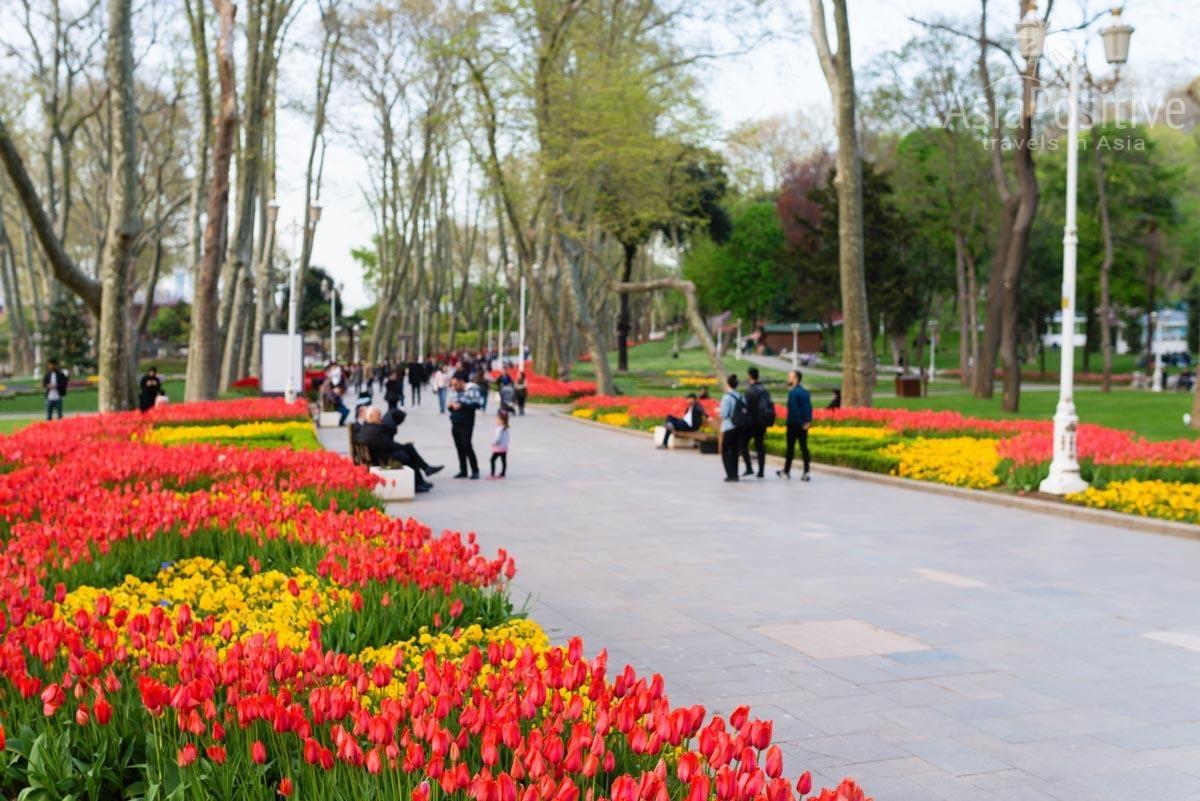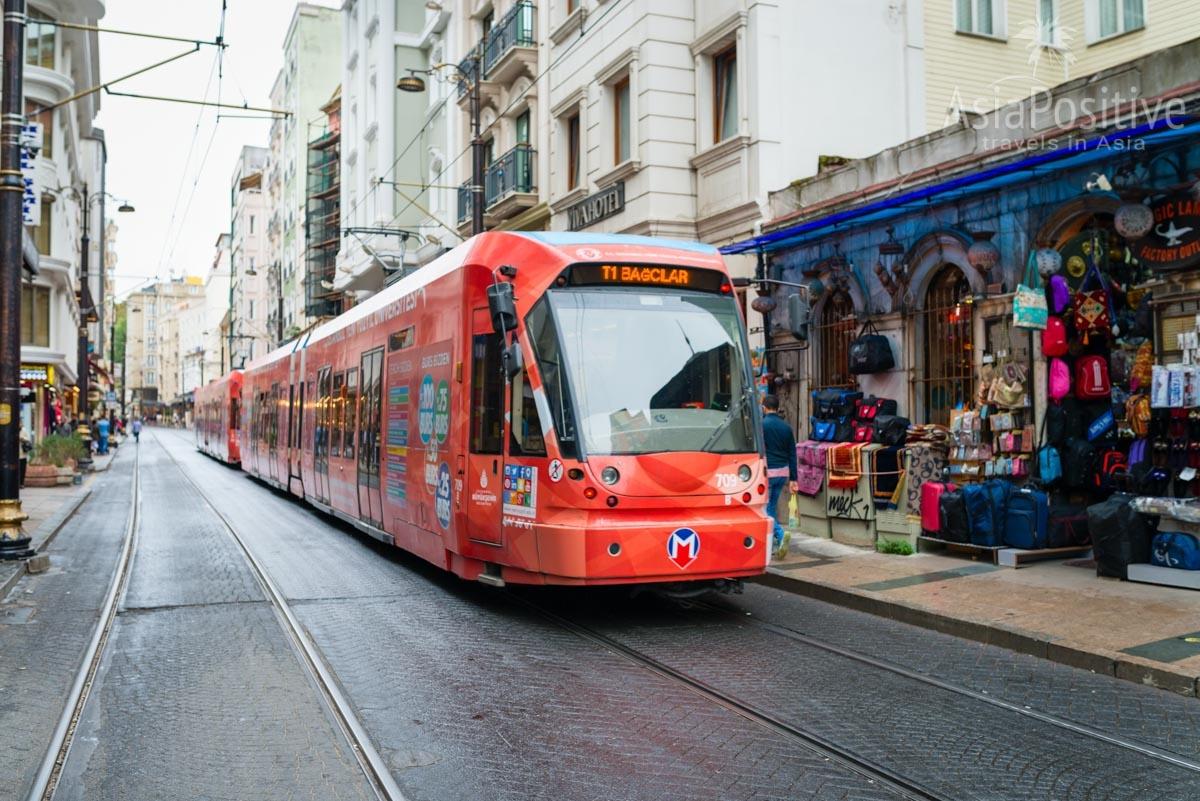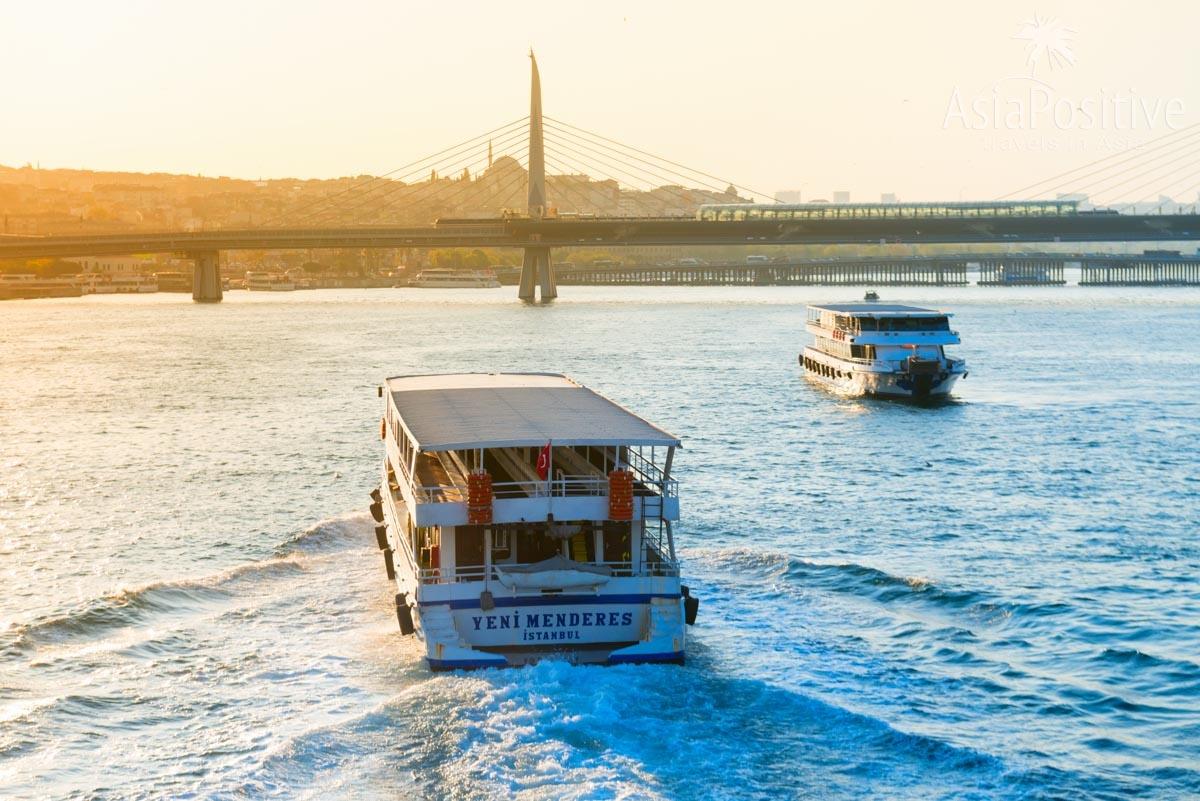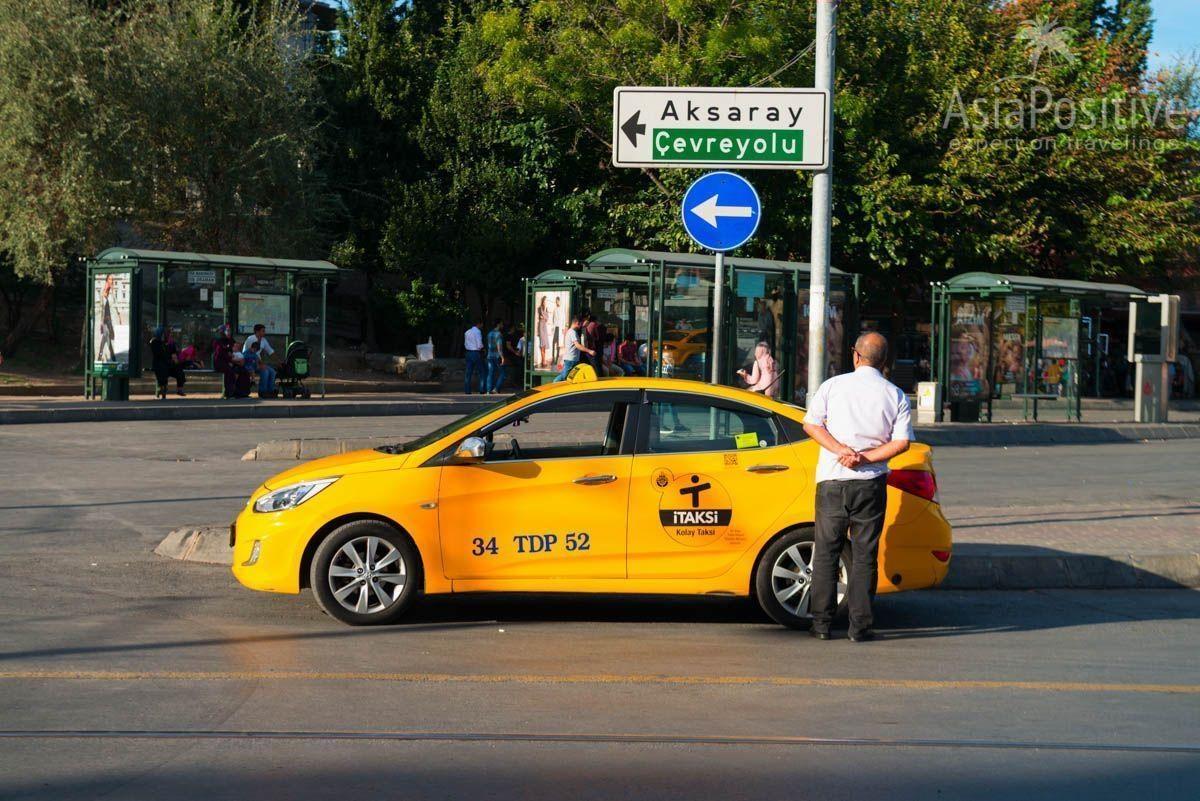This article is a brief overview of everything a tourist should know about Istanbul - when is the best time to go, where to stay, what to see, how to book a tour, how to get around Istanbul and how to dress for walking around the city or visiting religious sites. You will also find out what fraudulent schemes tourists most often encounter.

From this article you will find out:
Find a flight to Istanbul Book a hotel Guided tour and things to do in Istanbul
When Is the best time to go to Istanbul
The best time to visit Istanbul is during the spring (April to June) and autumn (September to November) months. The weather is mild and pleasant during these periods, perfect for sightseeing and walks around the city.
Spring brings blooming tulips, a symbol of Istanbul, and autumn offers comfortable temperatures without the summer crowds of tourists.
Summer (July and August) can be hot and humid, while winter (December to March) can be cold and rainy, though charming with fewer tourists.
More details you can find in this article - When is the Best Time to Visit Istanbul

How big is Istanbul
As of 2024, Istanbul's population is estimated to be over 16 million people, making it the largest city in Turkey and one of the largest cities in the world by population.
The city is divided by the Bosphorus Strait, with the European side traditionally being Istanbul's cultural and historical heart, home to landmarks such as the Hagia Sophia, Blue Mosque, and Topkapi Palace.
The Asian side, while more residential and less touristy, also offers a vibrant atmosphere and local charm, with districts like Kadıköy and Üsküdar.

Where to stay in Istanbul
- Sultanahmet - For first-time visitors, Sultanahmet is the most convenient area to stay in. This historic neighborhood is home to many of Istanbul's top attractions, including the Hagia Sophia, Blue Mosque, and Topkapi Palace. Staying here means you'll be within walking distance of these iconic sites. Accommodations range from luxury hotels to charming boutique inns.
- Beyoğlu and Taksim - If you prefer a more modern vibe with vibrant nightlife, head to Beyoğlu and Taksim. This area offers a plethora of dining, shopping, and entertainment options. Istiklal Street, the main pedestrian thoroughfare, is packed with cafes, restaurants, and shops. Taksim Square is a major hub for public transportation, making it easy to explore other parts of the city.
- Kadıköy - For a more local experience, consider staying in Kadıköy on the Asian side of Istanbul. This lively district is known for its bustling markets, trendy cafes, and the famous Bahariye Street. It's a bit farther from the main tourist sites but offers a unique perspective on Istanbul life. The ferry ride across the Bosphorus provides stunning views of the city skyline.

Why it is worth booking a guided tour in Istanbul
I recommend all my friends start exploring Istanbul with a guided sightseeing tour. And for this, I have several reasons:
- Expert Knowledge - Guided tours offer insights and historical context that you might miss on your own. Knowledgeable guides can provide fascinating stories and details about Istanbul's rich heritage and culture.
- Convenience and Time-Saving - With a guided tour, you can bypass long lines at major attractions, saving valuable time. Tours are often designed to maximize your experience, ensuring you see all the highlights without the stress of planning and navigation.
- Local Insights - Tour guides often share tips about local customs, dining recommendations, and lesser-known spots, enhancing your overall experience and allowing you to enjoy Istanbul like a local.
- Safety and Comfort - Especially for first-time visitors, guided tours can offer a sense of security and comfort. Navigating a bustling city like Istanbul can be daunting, and having a guide ensures you don't get lost and can focus on enjoying your trip.
What to see first in Istanbul
- Hagia Sophia - Start your journey with Hagia Sophia, an architectural marvel that has served as a church, mosque, museum and again mosque. Its stunning mosaics, massive dome, and rich history make it a must-see.
- Blue Mosque - Just a short walk from Hagia Sophia, the Blue Mosque is renowned for its beautiful blue tiles and impressive architecture. While still an active place of worship, it's open to visitors outside of prayer times.
- Topkapi Palace - Explore the opulent Topkapi Palace, the former residence of Ottoman sultans. Wander through its lavish courtyards, impressive halls, and intriguing Harem section.
- Grand Bazaar - Immerse yourself in the vibrant atmosphere of the Grand Bazaar, one of the world's largest and oldest covered markets. Here, you can shop for everything from spices and jewellery to carpets and souvenirs..
- Bosphorus Cruise - A cruise along the Bosphorus is an excellent way to see the city from a different perspective. You'll glide past palaces, fortresses, and the picturesque waterfront with the unique experience of straddling two continents.

How to go around Istanbul
First, get yourself an Istanbulkart, a smart card for all public transportation modes. It can be purchased and recharged at kiosks, metro stations, and convenience stores. This card provides a convenient and cost-effective way to pay for your trips.
How to buy and use Istanbulkart you can find in the article How to pay for public transport in Istanbul and save money with Istanbulkart.

Istanbul public transport:
- Istanbul's metro system is modern and efficient, with several lines connecting different parts of the city.
- The tram is particularly useful for tourists, especially the T1 line, which runs from Kabataş to Bağcılar. This line passes through major tourist spots like Sultanahmet, Eminönü, and the Grand Bazaar.
- Ferries are not just a mode of transportation but also a scenic way to see the city. They connect various points along the Bosphorus and between the European and Asian sides. Popular routes include those from Eminönü to Kadıköy and from Beşiktaş to Üsküdar.
- Istanbul’s extensive bus network covers areas not serviced by metro or tram. Buses can get crowded, especially during peak hours, but they are an essential part of the city's transit system.
- Istanbul has two funicular lines:
- F1: Connects Kabataş (where you can catch the tram) to Taksim Square.
- F2: Links Karaköy (near the Galata Bridge) to Beyoğlu, providing easy access to the historic Galata Tower area.
Taxis in Istanbul are plentiful, but be sure to use metered ones to avoid overpaying. Confirm that the meter is running at the start of your journey.

How to dress in Istanbul
While Istanbul is quite modern and cosmopolitan, it's still a good idea to dress modestly, especially when visiting religious sites. It means avoiding overly revealing clothing.
Mosques and Religious Sites:
- Women should wear long skirts or pants and cover their shoulders. A scarf to cover the head is required inside mosques.
- Men should wear long pants and avoid sleeveless shirts.
Given the amount of walking you’ll do, prioritize comfort. Choose shoes that you have already broken in to avoid blisters.
How safe is Istanbul
Istanbul, like any major city, has its safety considerations, but overall, it is relatively safe for tourists. Here are some detailed insights and tips to ensure a safe and enjoyable trip:
- Petty Crime: Pickpocketing and bag snatching can occur, particularly in crowded areas like markets, tourist sites, and public transportation. Be vigilant, keep your belongings secure, and avoid displaying valuables.
- Scams: Be wary of common scams targeting tourists. These can include overpriced taxi fares, fake jewelry sales, and offers for "free" tours that lead to high-pressure sales tactics.

Practical tips
- Traffic: Istanbul is notorious for its traffic, especially during rush hours (8-10 AM and 5-7 PM). Plan your trips accordingly and consider using trams or metro to avoid delays.
- Internet in Istanbul: With a Pocket WiFi device offering unlimited 4G internet, you can stay connected anywhere in Turkey. Enjoy a secure, high-speed connection that can be shared with up to 10 mobile devices simultaneously.
- Language: Most signs in public transportation are bilingual (Turkish and English), and major tourist areas often have English-speaking staff. However, learning a few basic Turkish phrases can be helpful.
Istanbul is a city of contrasts and wonders, offering an unforgettable experience for first-time travellers. By visiting during the best seasons, choosing the right place to stay, prioritizing top attractions, and considering a guided tour, you can make the most of your visit to this mesmerizing city. Prepare to be captivated by the rich history, stunning architecture, and vibrant culture that Istanbul offers.

